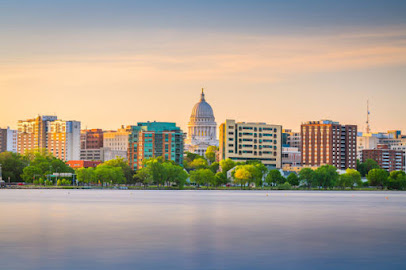Madison: From past to present
Though I wasn’t born here, I’ve spent the vast majority of my life in Madison. Before European settlement, the land that would one day become Madison was occupied by multiple indigenous tribes such as the Meskwaki and the Sauk. But the group that primarily used the land was the Ho-Chunk. These tribes built numerous burial and ceremonial mounds in the region. These groups also utilized the variety of harvestable plants in the area. They collected acorns, milk weed blossoms, wild plums, and wild rice. Wild rice was a plant that they could find in abundance in the lakes and marshes of the Madison area. In later years, they also grew crops such as corn, squash, and tobacco.
After European settlement in the early 1600s, the native
communities were forcibly removed from the area through various means. In 1837,
James Duane Doty purchased over a thousand acres of land in southern Wisconsin
and proposed it become the state capital. Soon thereafter, the city was named
Madison and officially declared the state capital. After Wisconsin became a
state in 1848 the university was founded, and other industries situated
themselves in Madison as well. This development was pushed further forward by
the arrival of the railroad in 1854. In addition to its governmental and scholastic
importance, Madison became a trade hub for agricultural goods from the
surrounding areas. The south side of Madison was primarily dominated by
lowlands and wetlands. This made the area less desirable for housing and
therefore more affordable. In the early 1900’s south Madison was dominated by
immigrants who couldn’t afford the high price tag of more “desirable” parts of
the city.
Today, Madison is still best known for being home to
UW-Madison and its tittle as the Wisconsin State capital. One of the big ecological
concerns in the area is water pollution as a result of agriculture. Its not
uncommon to be banned from swimming in Madison’s lakes as a result of a
blue-green algae bloom. But cyanobacteria are only one of the potential
problems that can result after runoff from farms makes it into Madison lakes.
This type of pollution is called nonpoint source pollution and it can also negatively
impact the natural functions of wetlands in the area, which are important habitats for many native species.
Sources:
http://www.pheasantbranch.org/prairies/pb_brochure.pdf
https://morgridge.wiscweb.wisc.edu/wp-content/uploads/sites/4/2017/02/History_of_Madison.pdf
https://dnr.wisconsin.gov/topic/Nonpoint/AgEnviromentalImpact.html
https://www.britannica.com/place/Madison-Wisconsin

I wonder if the blue-green algae blooms are a common occurrence in Wisconsin. They occur in the lakes where I'm from in Wisconsin which is north of Madison, but I'm not sure if they occur everywhere. If they do, I wonder why it would occur so frequently across the state. In regards to the runoff, I wonder how often that occurs in the major lakes surrounding Madison and its prevalence in the water during the summer.
ReplyDeleteI really liked how your post went into depth about the Native American tribes who were on this land before European Settlers and Badgers today. I think it is critically important to acknowledge this in any time Madison is discussed and written about. I wonder how the land today still impacts the populations of differing socioeconomic status groups within Madison and the greater midwest as a whole. This would be a very interesting research topic in the future! Moreover, I really enjoyed how you made the blog post applicable to us college students who are known to swim in the lakes during the summer as I had no idea that this is one of the common reason swimming is sometimes temporarily banned in the areas. This is very good to know and I am glad I was able to learn about it from your choice to include it in your post.
ReplyDelete